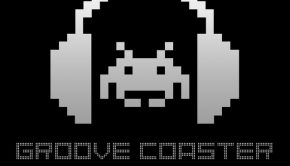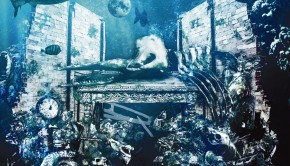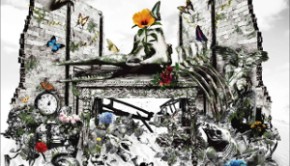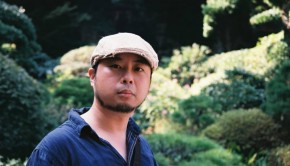Darius: G-Darius -Mikai Kanryo-
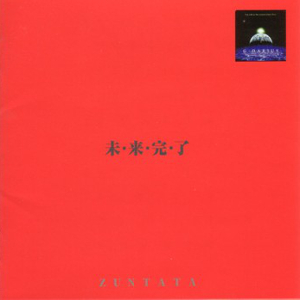 |
Album Title: G-Darius -Mikai Kanryo- |
| Record Label: Zuntata Records |
|
| Catalog No.: ZTTL-0019 |
|
| Release Date: February 21, 1998 |
|
| Purchase: Download on iTunes |
Overview
If Hideyuki Suzuki and Koji Igarashi had a daunting task arranging the experimental music found in Darius Gaiden, I’d say the task placed before Hideyuki Suzuki and Nobuhito Tanashi is even more daunting. The music for G-Darius is the most experimental Darius soundtrack. Given the very unique nature of the original soundtrack, how do Suzuki and Tanashi go about arranging the music for G-Darius -Mikai Kanryo-? Well, there are only a few themes featured on the album, arranged in multiple ways, if that is any indication…
Body
The arranged album is quite unique in its approach. Although there are only five original themes adapted on the album, they’re each arranged in two different ways. For those track names without numbers, the originals are adapted in fairly faithful way. Those that feature numbers, however, are the more experimental arrangements on the album. It’s definitely an interesting approach that capitalizes on the experimental nature of the original.
A good example is what the arrangers did with “B.T. Dutch”, the epic opening theme from the official soundtrack. The two options are definitely quite interesting, that’s for sure. “B.T. DUTCH ~Yuganda Keijou~” really pays homage to the original, but at the same time, adds a bit more depth to it. It is an amazing electronic feat full of distorted synth and violin samples, heavy beats, a futuristic soundscapes, and the strong industrial influence. In the end, it’s a very nice adaptation. The other arrangement, “B.T. DUTCH #2,” is much more intriguing. Rather than going all out with the industrial soundscape, this arrangement is an interesting fusion of some industrial aspects, some rock aspects, some electronic aspects, and some calmer orgel sections. It’s definitely a mellower, yet still intense, take on the original.
“G-ZERO #2” takes the original and transforms it into a fusion of orchestral tones, some slow-jam jazz style percussion, quirky synth sections and sound effects, and suspenseful beats. It’s a very slow arrangement, for the most part, but as it climaxes near the end, it becomes such a delight to the ears, with a dance beat and some electric guitar riffs. “G-ZERO ~Hunger Cell~,” on the other hand, is an intense industrial rock/electronic arrangement with mysterious synth samples, some fantastic manipulation of various sound effects that really add to the atmosphere of the arrangement, as well as some more ethnic influences heard in some woodwind synthesizer samples. It’s a fantastic take on the original and definitely my favorite of the two “G-ZERO” arrangements.
“H.G. Virus #2” also incorporates the use of slow-jam jazz style percussion, but I really like the industrial beats that accompany them. There are some also some very mysterious strings and woodwind sections, some accordion samples, and some rock influence. It definitely manages to capture a very mysterious atmosphere, but at the same time, the intensity, despite its tempo, really manages to help this arrangement succeed. “H.G.Virus ~Meneki~” is another interesting fusion arrangement. Intense industrial electronic beats are coupled with some beautiful orchestral harmonies and a variety of unique synth harmonies. There are also some mellower sections with some acoustic guitar thrown in that give it a bit of a rustic sound.
“KIMERA II #2” opens up with a beautiful piano passage before adding in some frenetic electronic bass line and some jazzy drum samples. It also maintains a very beautiful sound due to the crystalline and ethereal synth heard in the melody line. However, the beautiful soundscapes are eclipsed some times by some more suspenseful and chaotic sections, particularly in the way the piano and electronic beats are incorporated. “KIMERA II ~Dai Ni Sedai~” opens up with an airy synth passage that really continues the calming mood heard in the intro of “KIMERA II #2,” but it soon turns into a more intense and frenetic affair. The industrial percussion sections really help give a nice depth to the arrangement that really contrast nicely with the more upbeat techno sections heard during the arrangement’s duration. There are some interesting rhythms incorporated as well, almost in a style similar to dubstep electronica. Lastly, “KIMERA II #3” incorporates a more mysterious atmosphere, exotic vocal samples, and some beautiful piano, strings, and woodwind sections. There is definitely a hint of some Asian soundscapes; however, the arrangement focuses on a more relaxing experience overall.
The final boss theme is also featured twice on the album and both offer a very compelling experience. “Adam #2” opens with a beautiful piano and violin adaption that really provides a very desolate atmosphere. As the arrangement progresses, some rock drum samples are added that only enhance the atmosphere. It’s a very somber arrangement that really manages to take the original and bring a bunch more emotion into the mix. The album closes with “Adam ~Iam~, a very upbeat version of the original. Piano shines again, however, rather than providing a somber experience, this one is a jovial affair. It has a certain jazzy/latin flavor to it and when combined with the industrial beats and synthesizer melodies, it really manages to bring a nice playfulness to the album so full of serious tones and experimental arrangements, although there are some more serious sections in this arrangement as well. It’s one of my favorite themes on the entire album.
Summary
In the end, I think that Hideyuki Suzuki and Nobuhito Tanashi manage to provide a gripping experience, especially given the daunting task of arranging the original music. Perhaps Hideyuki Suzuki learned from his experience with Darius Gaiden -The Last Kiss- to take a bolder approach here. Either way, he and his colleague manage to provide exhilarating and emotional arrangements. Although not every track was featured from the original, the multiple versions of the songs chosen do offer quite a variety. If you can find it, definitely try to pick it up!
Posted on November 11, 2015 by Don Kotowski. Last modified on January 19, 2016.

